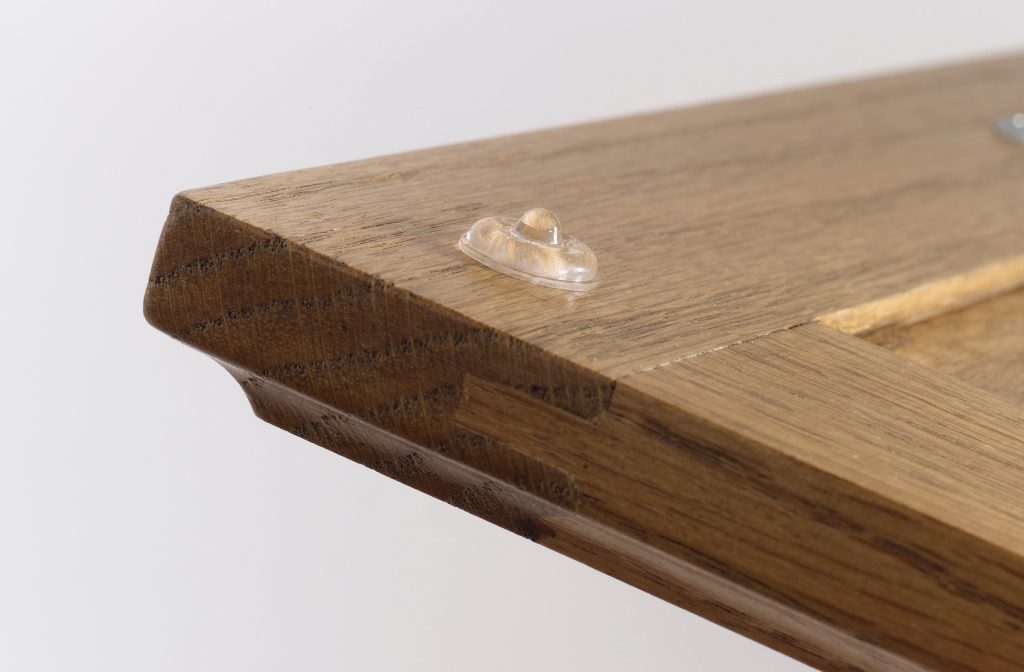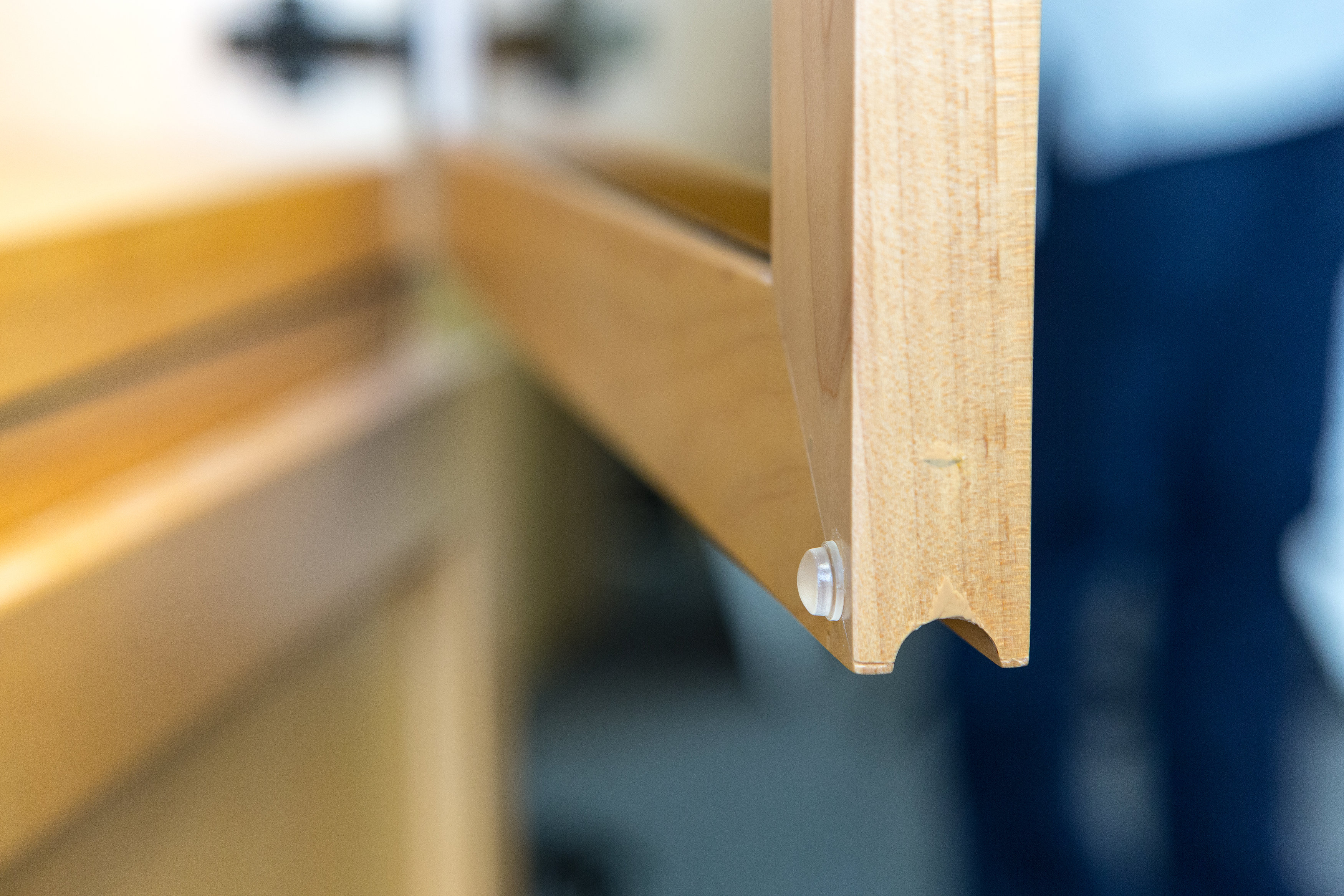Cabinet Door Bumpers

Cabinet door bumpers are small, often inconspicuous components that play a crucial role in protecting your cabinets and walls from damage. They act as a buffer, absorbing the impact of doors slamming shut or opening forcefully.
Types of Cabinet Door Bumpers
Cabinet door bumpers come in a variety of materials, designs, and sizes, catering to different needs and aesthetic preferences. Here’s a breakdown of the common types available at Lowe’s:
- Self-adhesive Bumpers: These are the most popular and readily available type. They typically consist of a soft rubber or foam pad attached to an adhesive backing. These bumpers are easy to apply and are ideal for light-duty applications, such as preventing minor scratches on walls or cabinet doors.
- Screw-on Bumpers: These bumpers offer a more secure and durable solution, particularly for heavier doors or high-traffic areas. They are typically made of metal, plastic, or rubber and are secured to the door or cabinet with screws.
- Magnetic Bumpers: Magnetic bumpers offer a sleek and invisible solution. They consist of a magnetic plate that attaches to the door and a corresponding metal plate that mounts to the wall or cabinet. This design allows the door to close gently and silently without any visible hardware.
- Corner Bumpers: These bumpers are specifically designed to protect the corners of cabinet doors from impacts. They are typically made of durable plastic or metal and are secured with screws or adhesive.
Benefits of Using Cabinet Door Bumpers, Cabinet door bumpers lowes
The benefits of using cabinet door bumpers extend beyond simply protecting your cabinets and walls:
- Reduce Noise: Bumpers absorb the impact of closing doors, significantly reducing the noise level in your kitchen or bathroom. This is especially beneficial in homes with young children or pets who may accidentally slam doors.
- Prevent Scratches and Dents: Bumpers act as a buffer between the door and the wall or cabinet, preventing scratches, dents, and other damage that can occur over time.
- Enhance Aesthetics: Bumpers can be found in a variety of colors and styles to match your existing cabinet hardware and decor. This allows you to protect your cabinets while maintaining a cohesive and aesthetically pleasing look.
Comparing Cabinet Door Bumper Options
Here’s a table comparing the features, pros, and cons of various cabinet door bumper options available at Lowe’s:
| Type | Features | Pros | Cons |
|---|---|---|---|
| Self-adhesive Bumpers | Soft rubber or foam pad, adhesive backing | Easy to apply, inexpensive, variety of colors and shapes | Not as durable as screw-on bumpers, may not hold up in high-traffic areas |
| Screw-on Bumpers | Metal, plastic, or rubber construction, screw-on installation | Durable, secure, suitable for heavy doors | More expensive than self-adhesive bumpers, requires drilling |
| Magnetic Bumpers | Magnetic plate, metal plate, invisible design | Sleek and invisible, quiet operation, strong holding power | More expensive than other options, requires careful placement |
| Corner Bumpers | Durable plastic or metal construction, corner protection | Protects corners from impacts, variety of styles | May not be suitable for all applications, can be bulky |
Choosing the Right Cabinet Door Bumpers for Your Needs: Cabinet Door Bumpers Lowes
Choosing the right cabinet door bumpers is essential for protecting your cabinets from damage and ensuring smooth operation. They provide a cushion to absorb the impact of closing doors, preventing scratches, dents, and other unsightly marks.
Factors to Consider When Choosing Cabinet Door Bumpers
When selecting cabinet door bumpers, several factors come into play. Understanding these factors will help you make an informed decision that meets your specific needs.
- Cabinet Size: Larger cabinets with heavier doors may require stronger bumpers to withstand the increased impact. Consider the size and weight of your cabinets when choosing bumpers.
- Door Weight: Heavier doors require bumpers with higher impact absorption capacity to prevent damage. A bumper’s ability to absorb impact is often measured in its compression rating.
- Door Material: The material of your cabinet doors can influence the type of bumper you choose. For example, wooden doors may require bumpers with a softer material to avoid leaving marks.
- Desired Level of Protection: The level of protection you desire will influence the type of bumper you select. Some bumpers offer basic protection, while others provide more robust impact absorption.
Types of Cabinet Door Bumpers
Different types of cabinet door bumpers are available, each designed for specific applications and cabinet styles.
- Self-Adhesive Bumpers: These bumpers are easy to install and are ideal for light-duty applications. They typically have a sticky backing that adheres to the cabinet door.
- Screw-On Bumpers: These bumpers offer a more secure attachment and are suitable for heavier doors or applications where a stronger hold is needed. They are typically installed with screws or nails.
- Magnetic Bumpers: These bumpers use magnets to attach to the cabinet door, providing a clean and unobtrusive appearance. They are suitable for cabinets with metal surfaces.
Measuring Cabinet Doors and Determining the Correct Size and Quantity of Bumpers
To ensure you select the right size and quantity of bumpers, accurate measurements are crucial.
- Measure the Door Width and Height: Measure the width and height of each cabinet door to determine the size of bumpers you need. Select bumpers that are slightly smaller than the door width to allow for a comfortable closing motion.
- Determine the Number of Bumpers Needed: Based on the size of your cabinet doors and the level of protection desired, you can determine the number of bumpers needed per door. For heavier doors, it’s generally recommended to use multiple bumpers for optimal protection.
Decision Tree for Choosing Cabinet Door Bumpers
The following decision tree can help you select the right cabinet door bumpers based on your specific requirements.
Step 1: Determine the weight of your cabinet doors.
* Light-duty doors: Choose self-adhesive bumpers or magnetic bumpers.
* Heavy-duty doors: Choose screw-on bumpers.Step 2: Consider the material of your cabinet doors.
* Wood doors: Choose bumpers with a softer material to avoid leaving marks.
* Metal doors: Choose bumpers with a harder material for greater durability.Step 3: Determine the desired level of protection.
* Basic protection: Choose self-adhesive bumpers or magnetic bumpers.
* Robust protection: Choose screw-on bumpers.
Installing Cabinet Door Bumpers

Installing cabinet door bumpers is a simple DIY project that can prevent damage to your cabinets and enhance their overall appearance. With the right tools and a little patience, you can easily install these bumpers and enjoy a smoother, quieter cabinet experience.
Tools and Materials
The tools and materials required for installing cabinet door bumpers depend on the type of bumper you choose. However, some common tools and materials include:
- Cabinet Door Bumpers: Select the type of bumper that best suits your needs, considering factors like material, size, and installation method.
- Measuring Tape: Accurately measure the location where you want to install the bumpers.
- Pencil: Mark the installation points on the cabinet doors or cabinet frames.
- Screwdriver: Use a screwdriver that matches the screws provided with the bumpers.
- Drill: For drilling pilot holes for screw-on bumpers.
- Level: Ensure the bumpers are installed level for a professional finish.
- Adhesive: For adhesive bumpers, use a strong, durable adhesive specifically designed for cabinet surfaces.
- Cleaning Cloth: Clean the installation surfaces before applying adhesive or installing screw-on bumpers.
Safety Precautions
- Wear Safety Glasses: Protect your eyes from debris and flying particles during drilling or screwing.
- Use a Workbench or Stable Surface: Ensure you have a stable and secure workspace to prevent accidents.
- Handle Tools with Care: Use tools appropriately and avoid using them for purposes other than their intended use.
Installing Adhesive Bumpers
Adhesive bumpers are easy to install and require no drilling or screwing. Follow these steps:
- Clean the Installation Surface: Thoroughly clean the surface where you want to install the bumper using a cleaning cloth and mild soap. Ensure the surface is dry before proceeding.
- Position the Bumper: Place the bumper in the desired location on the cabinet door or frame. Ensure it is level and centered.
- Apply Adhesive: Apply a thin layer of adhesive to the back of the bumper. Follow the manufacturer’s instructions for the specific adhesive used.
- Press Firmly: Press the bumper firmly against the installation surface and hold it in place for several seconds to allow the adhesive to bond.
- Wait for Adhesive to Dry: Allow the adhesive to dry completely before using the cabinet door. The drying time will vary depending on the adhesive used, so refer to the manufacturer’s instructions.
Installing Screw-on Bumpers
Screw-on bumpers provide a more secure and durable installation. Follow these steps:
- Mark the Installation Points: Use a pencil to mark the desired location for the bumper on the cabinet door or frame. Ensure the marks are level and centered.
- Drill Pilot Holes: If necessary, drill pilot holes at the marked locations using a drill bit slightly smaller than the diameter of the screws provided with the bumpers.
- Position the Bumper: Place the bumper over the pilot holes and align it with the marked points.
- Secure the Bumper: Use a screwdriver to fasten the screws through the bumper and into the cabinet door or frame. Tighten the screws securely but avoid overtightening.
Installing Magnetic Bumpers
Magnetic bumpers are ideal for cabinets that are frequently opened and closed. They offer a smooth, quiet operation and can be easily installed.
- Clean the Installation Surfaces: Thoroughly clean the cabinet door and frame surfaces where you want to install the bumpers. Ensure the surfaces are dry before proceeding.
- Position the Magnetic Parts: Place the magnetic parts in their respective locations on the cabinet door and frame. Ensure the magnets are aligned properly.
- Attach the Magnetic Parts: Depending on the type of magnetic bumper, you may need to use adhesive or screws to attach the magnetic parts. Follow the manufacturer’s instructions for the specific bumper used.
Cabinet door bumpers lowes – You know those little rubber things that keep your cabinet doors from slamming shut? Yeah, those cabinet door bumpers. You can find them at Lowe’s, but if you’re thinking about replacing your whole cabinet doors, you might want to check out this guide on how much are cabinet doors.
Then, once you’ve got your new doors, you can make sure they close smoothly with those trusty bumpers.
So, you’re thinking about those cabinet door bumpers from Lowe’s, right? They’re great for preventing those annoying bangs and scratches. But if you’re looking for a more stylish and functional solution, check out the performax 2 door wall cabinet.
It’s got sleek lines and plenty of storage space, and it’s sure to elevate your kitchen game. And hey, maybe you can even use those cabinet door bumpers on the new cabinet too, just in case!
